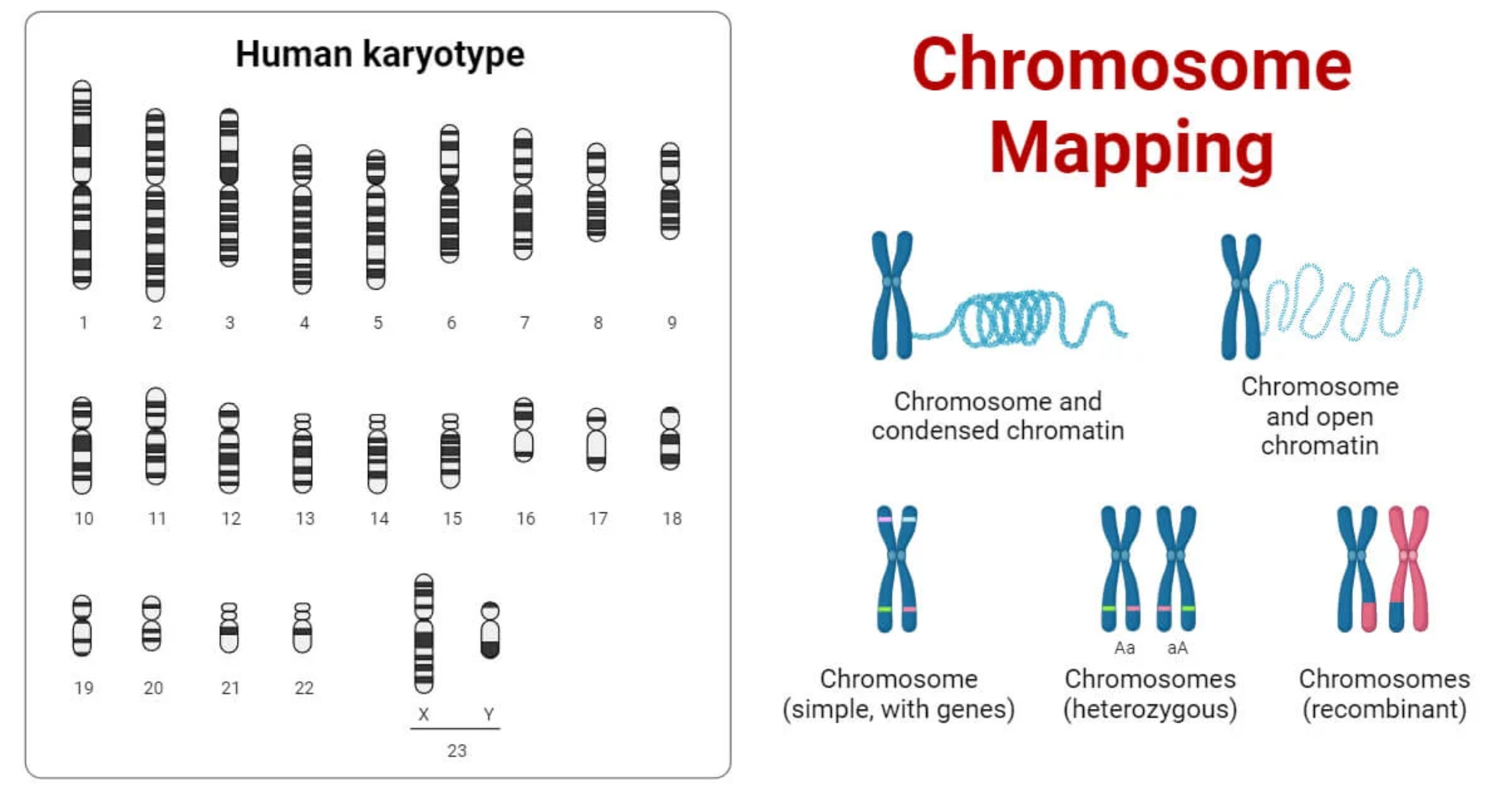
Chromosome mapping is a fascinating field of study that delves into the intricacies of our genetic makeup. Our DNA is organized into structures called chromosomes, which carry the essential information of who we are and what makes us unique. Mapping these chromosomes has allowed scientists to unlock numerous mysteries and gain valuable insights into various biological processes.
In this article, we will explore 20 enigmatic facts about chromosome mapping that showcase its importance in the world of biology. From understanding the role of chromosomes in inheritance to unraveling the secrets of human evolution, chromosome mapping has revolutionized our comprehension of the genetic landscape.
So, fasten your seatbelts and get ready to embark on a journey of discovery as we delve into the fascinating world of chromosome mapping!
Key Takeaways:
- Unraveling DNA Mysteries: Chromosome mapping helps scientists understand genetic disorders, ancestry, and even solve crimes through DNA analysis. It’s like a genetic treasure map leading to a world of secrets!
- Genetic Revolution: Chromosome mapping is like a genetic GPS, guiding us to personalized medicine, improved crops, and even predicting how our bodies respond to medications. It’s like having a genetic crystal ball for our health and well-being!
Chromosome mapping helps identify genetic disorders
Through chromosome mapping, scientists can pinpoint the exact locations of genes associated with genetic disorders, enabling early detection and treatment.
It allows us to track our ancestry
By analyzing specific markers on the chromosomes, we can trace our genetic lineage back to our ancestors and discover our genetic heritage.
Chromosome mapping aids in forensic investigations
Forensic scientists use chromosome mapping techniques to analyze DNA evidence and match it to potential suspects, helping solve crimes.
It has led to breakthroughs in personalized medicine
Chromosome mapping has paved the way for personalized medicine, as it helps determine an individual’s genetic predispositions to certain diseases, allowing for tailored treatments.
Chromosome mapping is essential in plant breeding
By mapping the chromosomes of plants, scientists can identify desirable genetic traits and breed crops with improved yield, resistance to diseases, and nutritional content.
It has revolutionized cancer research
Chromosome mapping has played a crucial role in understanding the genetic mutations that drive cancer development, leading to the development of targeted therapies.
Chromosome mapping can unlock the secrets of evolution
By comparing the chromosome maps of different species, scientists can gain insights into evolutionary relationships and understand how organisms have diverged over time.
It helps in the study of complex traits
Chromosome mapping allows researchers to identify the genes responsible for complex traits such as intelligence, height, and susceptibility to diseases.
Chromosome mapping aids in genetic counseling
Genetic counselors use chromosome mapping results to provide individuals and families with information about their risk of passing on certain genetic conditions.
It has implications for personalized nutrition
By analyzing an individual’s chromosome map, scientists can provide personalized dietary recommendations based on genetic factors that affect nutrient metabolism.
Chromosome mapping reveals the sex of an unborn baby
By examining specific chromosomes, medical professionals can determine the sex of a fetus during pregnancy.
It plays a role in the study of inherited diseases
Chromosome mapping has illuminated the genetic basis of various inherited diseases, allowing for better diagnosis and management.
Chromosome mapping provides insights into human migration patterns
By analyzing the genetic markers on chromosomes, scientists can reconstruct ancient migration routes and understand the movements of different populations.
It aids in the identification of genetic mutations
Through chromosome mapping, scientists can identify new mutations that contribute to genetic disorders, opening doors for therapeutic interventions.
Chromosome mapping uncovers the genetic diversity of populations
Comparing chromosome maps from individuals across different populations helps reveal the extent of genetic variation and the factors that shaped it.
It assists in animal conservation efforts
Chromosome mapping is utilized to study the genetic diversity of endangered species, aiding in conservation strategies and breeding programs.
Chromosome mapping can predict drug response
By analyzing an individual’s genetic makeup and mapping their chromosomes, researchers can predict how a person is likely to respond to certain medications.
It plays a role in understanding epigenetics
Chromosome mapping has shed light on the complex interactions between genes and the environment, contributing to our understanding of epigenetic modifications.
Chromosome mapping has applications in agriculture
By mapping the chromosomes of livestock, scientists can improve breeding programs and enhance desirable traits in animals.
It holds the potential for gene therapy advancements
Chromosome mapping provides vital information for gene therapy research, aiding in the development of targeted treatments for genetic disorders.
In conclusion, chromosome mapping has transformed the field of genetics, allowing us to unravel the intricacies of our DNA. Through this process, scientists have made significant strides in understanding genetic disorders, human evolution, personalized medicine, and much more. The 20 enigmatic facts about chromosome mapping mentioned in this article demonstrate the vast potential and impact of this field in shaping our knowledge of genetics and improving countless aspects of our lives.
Conclusion
Chromosome mapping is a fascinating field that has revolutionized our understanding of genetics and inheritance. Through the process of mapping, scientists have uncovered numerous enigmatic facts about our chromosomes and the genes they contain. From the discovery of genetic markers to the identification of gene locations, chromosome mapping has paved the way for advancements in various fields, including medicine, agriculture, and evolutionary biology.
By unraveling the complex structure and functions of chromosomes, scientists have gained valuable insights into genetic diseases, traits, and ancestry. Chromosome mapping has also provided critical evidence for understanding evolutionary relationships between species and populations. With ongoing advancements in technology and the availability of large-scale genomic data, chromosome mapping continues to unlock new mysteries and reshape our understanding of the genetic code.
In conclusion, chromosome mapping is an indispensable tool in the study of genetics. Its importance in various scientific disciplines cannot be overstated, and it promises to yield even more exciting discoveries in the future.
FAQs
1. What is chromosome mapping?
Chromosome mapping is the process of identifying and locating genes, DNA markers, and other genetic features on a chromosome. It involves creating a detailed map of the genetic material present on a chromosome.
2. Why is chromosome mapping important?
Chromosome mapping helps scientists understand the structure, function, and organization of chromosomes. It plays a crucial role in studying genetic diseases, inheritance patterns, and evolutionary relationships between species.
3. How is chromosome mapping done?
Chromosome mapping can be done using various techniques, including cytogenetic mapping, linkage mapping, and physical mapping. These methods involve analyzing genetic markers and DNA sequences to determine the location of genes on a chromosome.
4. What are the applications of chromosome mapping?
Chromosome mapping has practical applications in fields such as medicine, agriculture, and forensic science. It helps in diagnosing genetic disorders, breeding crops with desired traits, and establishing relationships between individuals using DNA analysis.
5. What are the challenges in chromosome mapping?
Chromosome mapping can be challenging due to the complexity of the human genome and the presence of repetitive sequences. Additionally, technological limitations and the need for large-scale data analysis pose obstacles in creating accurate and comprehensive chromosome maps.
Chromosome mapping's enigmatic nature has unveiled a wealth of knowledge, from identifying genetic disorders to aiding in forensic investigations. Its impact on personalized medicine and cancer research is undeniable. Unraveling the secrets of evolution and complex traits, chromosome mapping continues to shape our understanding of the human genome. But there's more to explore in the fascinating world of genetics. Dive into the mind-blowing facts about genetic linkage, be surprised by the revelations of DNA sequencing, and prepare to be astounded by the incredible advancements in the field of genomics.
Was this page helpful?
Our commitment to delivering trustworthy and engaging content is at the heart of what we do. Each fact on our site is contributed by real users like you, bringing a wealth of diverse insights and information. To ensure the highest standards of accuracy and reliability, our dedicated editors meticulously review each submission. This process guarantees that the facts we share are not only fascinating but also credible. Trust in our commitment to quality and authenticity as you explore and learn with us.


